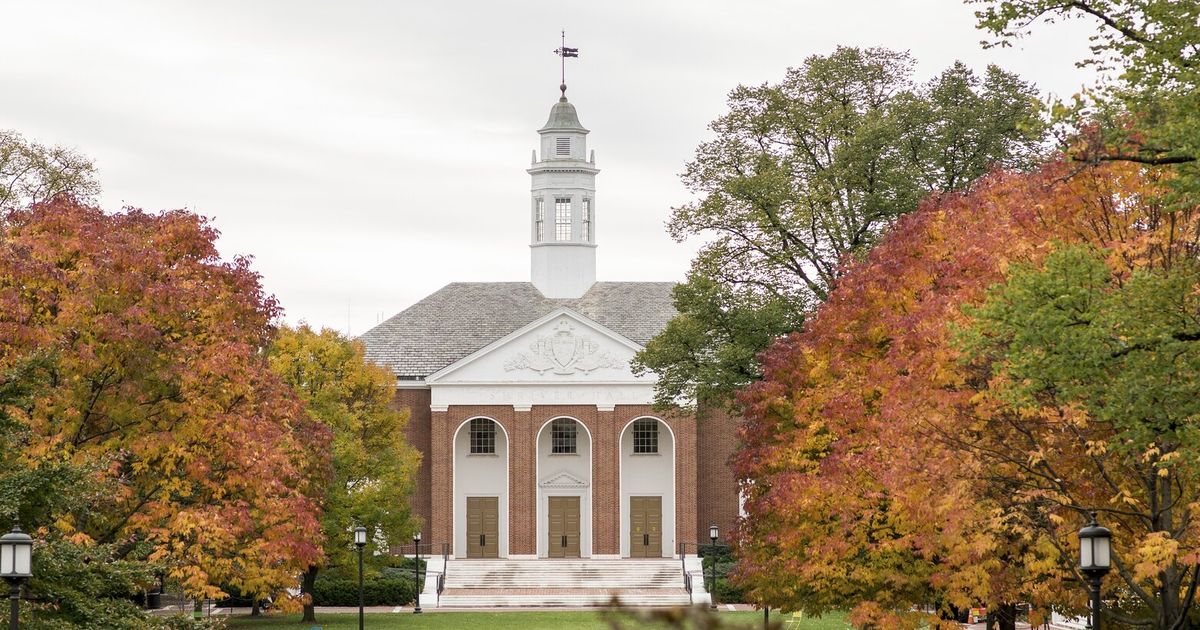Johns Hopkins Job Cuts: Over 2,000 Positions Slashed - Latest
Are universities, bastions of groundbreaking research and global impact, truly immune to the shifting tides of political and economic uncertainty? Johns Hopkins University, a globally recognized institution, is confronting a significant challenge, announcing substantial job cuts that underscore the complex relationship between federal funding, research priorities, and the very fabric of academic institutions.
On Thursday, in a somber announcement echoing through Baltimore and across the global health community, Johns Hopkins University revealed its intention to eliminate over 2,000 positions. This decision, a direct consequence of diminished federal funding, particularly a substantial reduction in grants initiated by the Trump administration, has sent shockwaves through the university community and beyond. The cuts, impacting both domestic and international operations, represent a profound restructuring with implications far beyond the immediate job losses.
The financial blow, specifically the termination of approximately $800 million in U.S. funding, has forced a painful reassessment of priorities. The U.S. Agency for International Development (USAID), a crucial source of support for numerous university programs, experienced significant cuts, leading directly to the layoffs. Jhpiego, the Center for Communication Programs (CCP), and the Johns Hopkins School of Medicine have all been impacted. These cuts were not limited to the United States; international programs across 44 countries are affected, with Jhpiego alone experiencing the largest job cuts in the university's history, with nearly 2,000 positions impacted. This curtailment of resources will undoubtedly impact vital global health initiatives.
The University's response has been a mix of reassessment and resilience. Johns Hopkins has stated its commitment to continuing its crucial work, including through Jhpiego, CCP, and the Department of International Health. Existing partnerships will be leveraged, and the university will proactively seek new avenues to maintain its global health impact. However, the scale of the cuts will inevitably necessitate difficult choices and a shift in focus.
Beyond the immediate financial repercussions, there's a palpable concern among researchers, who fear the long-term ramifications for the communities served by their programs. Cuts to USAID, in particular, are anticipated to have dire consequences, with the potential to destabilize communities that depend on these vital programs. These cuts are not merely statistical; they represent real-world impacts on health outcomes, disease prevention, and overall well-being in vulnerable populations.
The economic effects of these funding cuts are expected to extend beyond Johns Hopkins, rippling through the Baltimore area. As one of Maryland's largest private employers and an institution that supports a community of approximately 30,000 students, the university's economic influence is vast. The job losses will likely impact local businesses, housing, and other sectors, intensifying the economic strain.
The story of Johns Hopkins provides a glimpse into the intricate interplay between academia, politics, and global health. While universities strive to operate as independent centers of research, their operations are inextricably linked to the broader funding landscape and the evolving priorities of government. These job cuts are a harsh reminder of this interconnectedness and the challenges inherent in pursuing groundbreaking research and global health initiatives amidst financial constraints.
The university's 2025 economic growth forecast has also been adjusted, demonstrating the broader financial repercussions and uncertainty.
The future of Johns Hopkins University is uncertain. While the institutions dedication to its mission of discovery and education is unwavering, the reality of federal funding and its constraints have become a significant challenge. The job cuts represent more than just budget adjustments, they are a transformation. As the university adjusts to these changes, it is imperative to prioritize the well-being of its students, faculty, and communities, while continuing to push the frontiers of human knowledge.
| Key Details: Johns Hopkins University Job Cuts | |
|---|---|
| Affected Areas: | U.S. and International Programs (44 countries) |
| Number of Jobs Cut: | Over 2,000 (with some reports indicating over 2,200) |
| Reason for Cuts: | Loss of approximately $800 million in federal grants, mainly due to cuts by the Trump administration, particularly from USAID. |
| Impacted Departments/Programs: | Jhpiego, Center for Communication Programs (CCP), Johns Hopkins School of Medicine, and various global health initiatives. |
| Economic Impact: | Significant ripple effects expected in the Baltimore area, with potential impacts on local businesses and the economy. |
| University Response: | Commitment to continue its global health work through existing partnerships and by actively seeking new avenues. |
| Source: | Johns Hopkins Medicine Newsroom |

Johns Hopkins University slashes 2,000 jobs after Trump administration

Johns Hopkins Slashes More Than 2,000 Jobs Due to USAID Cuts

Johns Hopkins to cut more than 2,000 workers funded by federal aid